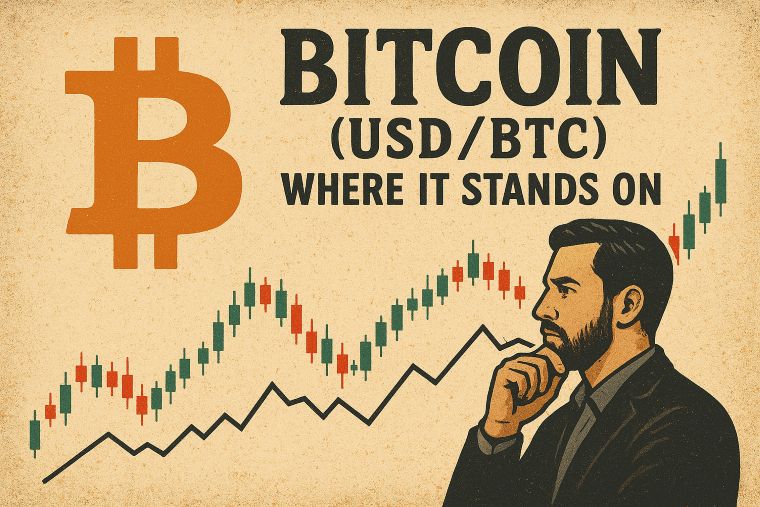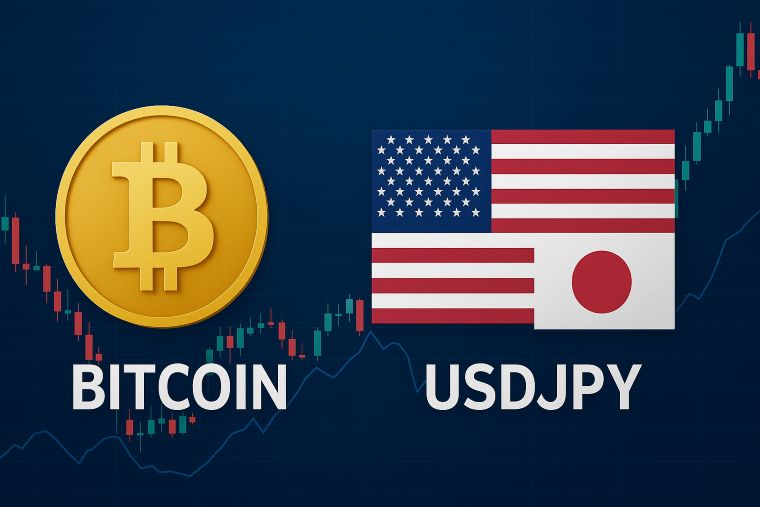3 min to read
Bitcoin (USD/BTC)
October 13, 2025 Outlook and Geopolitical Context

Bitcoin (USD/BTC) — Where It Stands on 13 October 2025 and Where It Might Go Next
An evidence-based column for investors and interested readers.
Snapshot (as of 12–13 Oct 2025)
Bitcoin is trading in the roughly $110k–$125k neighborhood — most spot feeds show prices around -$114k on October 12–13, 2025, after a volatile week.
The Short Story: Why Bitcoin Rallied — and Why Volatility Remains
Three big forces explain Bitcoin’s current posture:
-
Mass institutional demand via spot ETFs.
2025 has seen record institutional flows into spot-Bitcoin ETFs; inflows accelerated again in early October and analysts are talking about multi-billion dollars of demand driving price support. -
A softer US policy backdrop (for now).
The Fed cut rates in September 2025 and markets are parsing whether more easing is coming; a lower policy rate and easier financial conditions historically remove the opportunity cost of holding non-yielding assets like Bitcoin. -
Shifting geopolitics — from risk premium to stabilization.
A recent lull in the Israel-Gaza front has trimmed the “geopolitical risk” premium in oil and some risk assets, though renewed trade tensions between the US and China add fresh uncertainty. Both dynamics push Bitcoin’s price around — sometimes up, sometimes down — depending on which headline dominates.
Market Structure Matters: ETFs, On-Chain Flows and Liquidity
Spot ETF inflows are the single most important structural story in 2025 crypto markets.
Daily AUM and on-chain holdings for spot ETFs are rising and provide a steady buyer that can absorb substantial supply that would otherwise hit exchanges.
This reduces tail-risk from liquidations and supports higher price floors — but concentrates liquidity in institutional channels, amplifying volatility when flows reverse.
Macro Cross-Currents to Watch
-
Fed calendar & data blackouts.
The Fed’s next meeting (Oct 28–29, 2025) and delayed CPI release create temporary data uncertainty. Fed policy and inflation prints are key drivers of USD strength — both move BTC. -
Global growth & oil.
The IMF reports uneven global growth. Falling oil prices after recent ceasefires reduced risk premiums, though any flare-up would quickly reverse that effect and drive safe-haven demand. -
Trade policy & China risk.
New US tariffs and reciprocal Chinese measures raise uncertainty. This may depress growth expectations and trigger either risk-off moves into cash/gold or hedging flows into Bitcoin.
Scenario Mapping — 3 to 12 Month Outlook
1. Bullish Continuation — $140k–$200k range
Conditions: strong ETF inflows, continued Fed easing, no major geopolitical shock.
Signals: daily AUM growth for spot ETFs, dovish Fed rhetoric.
2. Volatile but Rangebound — $90k–$150k range
Conditions: competing headlines and macro noise, institutional demand cushions but can’t prevent pullbacks.
Signals: one-day ETF outflows, inflation surprises, USD strength.
3. Bearish Reversal (Tail Risk) — below $80k
Conditions: ETF flow reversal, new regulations, or global liquidity squeeze.
Signals: major redemptions, regulatory news, rising real yields.
Note: Institutional inflows create strong price floors, but macro shocks still bring fast drawdowns.
Practical Takeaways
-
Watch ETF flows daily.
Rising inflows = structural bid; outflows = short-term risk. -
Mark Fed dates and CPI releases.
Volatility clusters around data events — trade smaller, wider stops. -
Monitor geopolitical headlines.
Oil and regional equities often move first — Bitcoin reacts next. -
Plan liquidity and position sizing.
Institutional dominance = slower exits during panic phases. -
Consider hedging.
Options or cross-asset hedges are safer than outright shorts.
Bottom Line
As of 13 October 2025, Bitcoin sits on a structural bid created by ETF demand and a softer policy backdrop — but remains vulnerable to headline shocks from geopolitics and trade.
Expect a higher baseline valuation with episodic volatility. Upside persists if ETF flows continue and real rates stay low, but respect the speed of pullbacks triggered by surprise events.
Visit XM Official Website.

